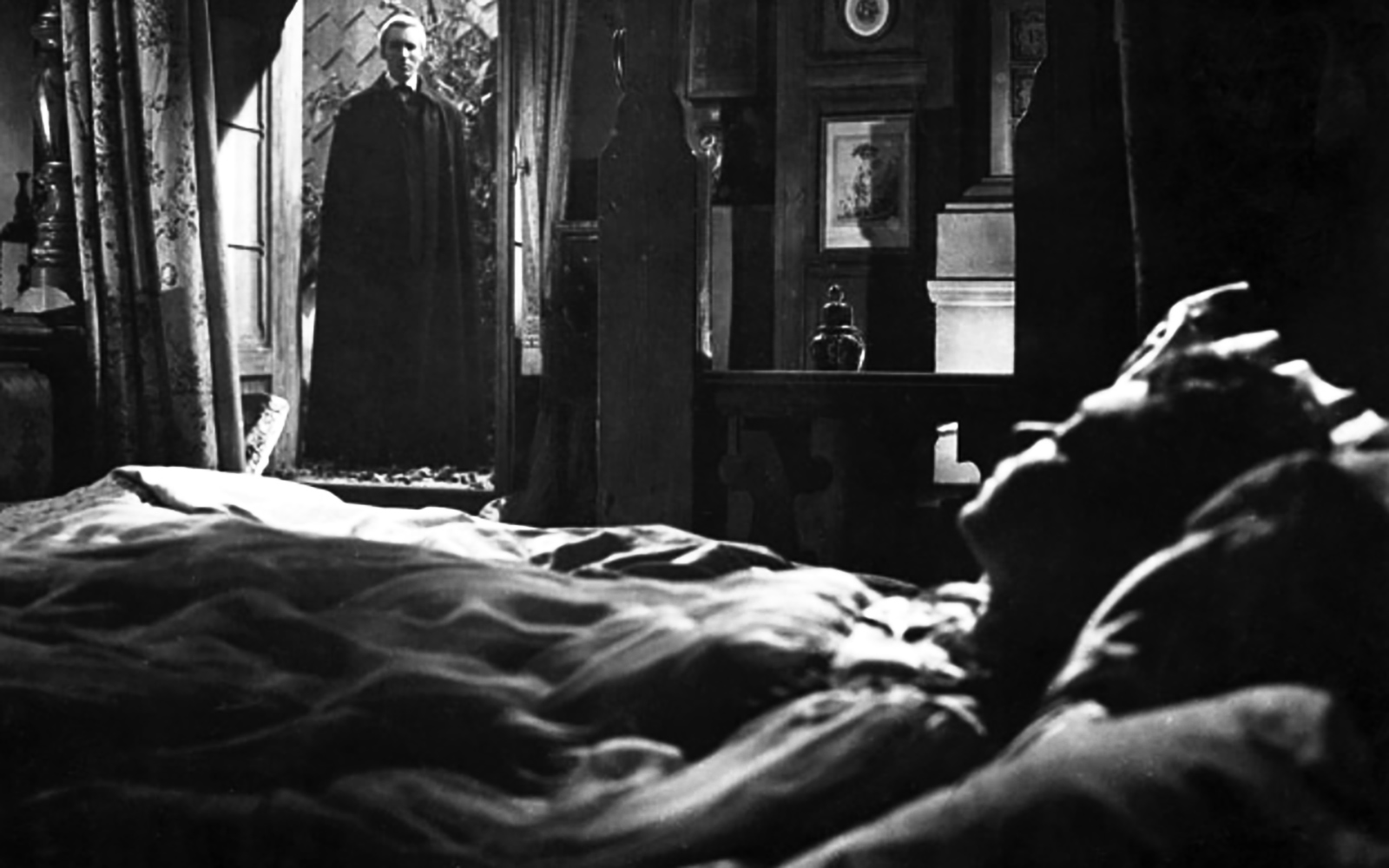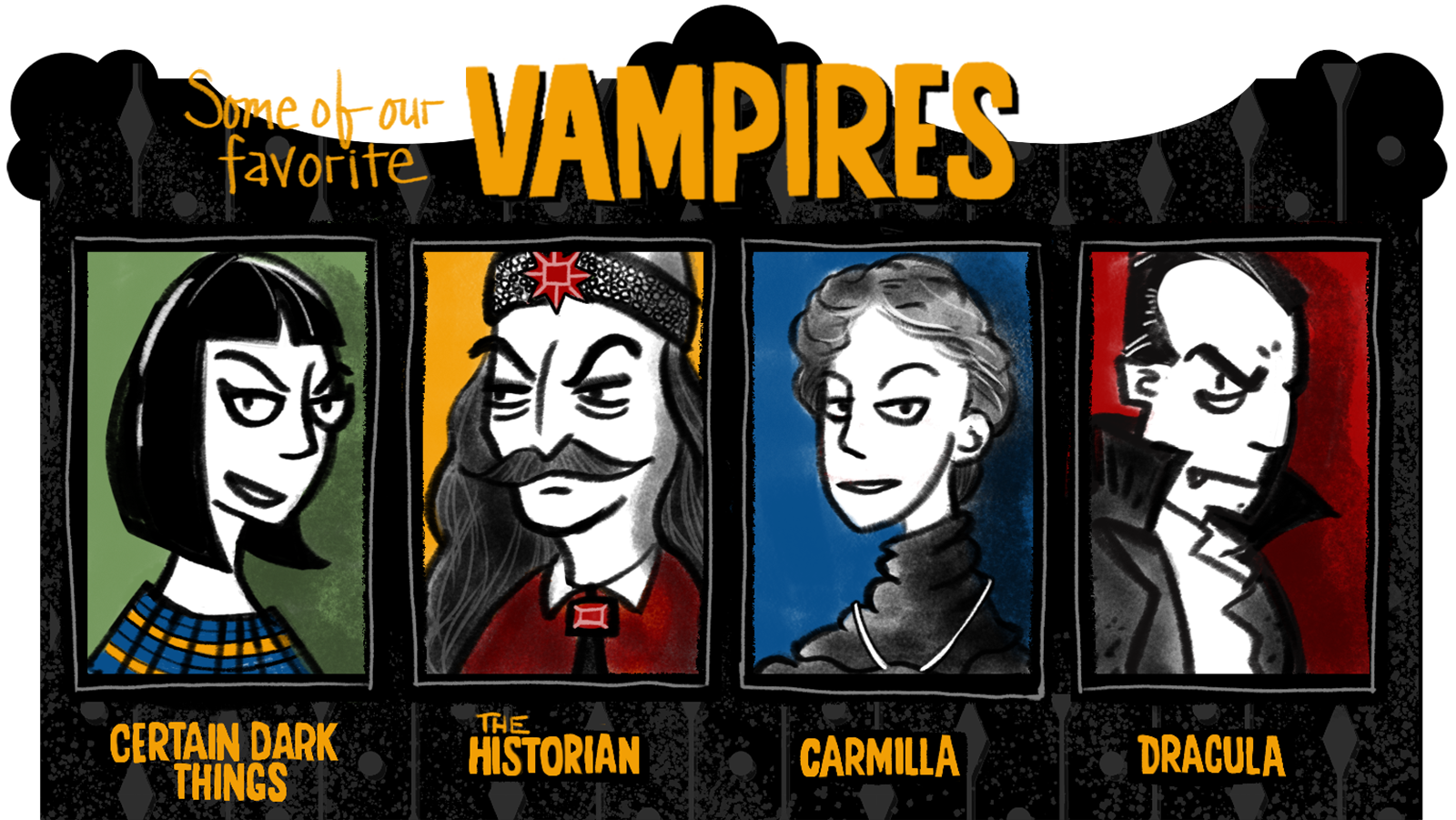
Armchair travel around the world!
Start your reading adventures with our FREE Reading Atlas.

- Around the World in 14 Books
- 7 Thrilling Book Series
- 6 Audiobooks That Are Like Theater For Your Ears



There was no doubt: Petar Blagojević was dead.
He’d been buried 10 weeks before and had been appropriately mourned by the villagers of Kisilova, Serbia. But one night, Peter came back.
With a knock on the door, he demanded his opanki (traditional shoes) from his wife, before literally dropping in on his other neighbors, lying atop their bodies and slowly pressing out their lives. Within a week, nine people in the village were dead. The town had survived financial hardship, weathered a brutal winter, and thrown off the yoke of Ottoman invaders, but one undead man was about to become its undoing.
So they did what any reasonable folk would do; they dug up Petar’s body.
Their grim expectations were met. The body had ‘not the slightest smell of death’ and appeared as fresh as it had in life. ‘In his mouth, not without surprise, did I see fresh blood, which, after the general opinion, he had sucked from this killed by him.’ With the assistance of a priest, the villagers drove a stake of white-thorn through the heart, then burnt the body to ashes.
This story reached the beautiful people of Vienna on 21 July 1725, via a personal account written in the Viennese newspaper Wienserisches Diarium by Imperial Provisor Frombald. We can only assume that they raised their eyebrows, tsk-tsked, and returned to their cake and coffee with whipped cream.
But the vampyres weren’t finished yet.
A few years later, in 1727, an unlucky peasant and militiaman named Arnold Paole returned to his village of Medveda (near Kisilova) from Turkish territory. He brought with him a troubling tale: He’d been bitten by a vampire! He assuaged his neighbors’ fears, saying they shouldn’t worry; he’d eaten dirt from the vampire’s grave as an antidote to turning into a vamp himself. What could possibly go wrong?
Then the fool fell off a hay wagon and broke his neck.
Just a few weeks later, villagers began to complain that Paole was rising from his grave and tormenting them in the night. He, too, was staked and burnt — along with his first four victims. But within a few months, 13 more people had died.
This news, again, made its way north and west, beginning the vampire fever that sank its fangs into the throat of the Austro-Hungarian Empire in the late 18th century. Now, bloodsuckers were terrifyingly chic. It wasn’t long before tales of vampires made the leap from folkloric hearsay to Gothic literature.

Though vampires would eventually make their way to starring roles in stories and novels, the first literary vampires rose up in German verse.
The Vampire by Heinrich August Ossenfelder, 1748
The first vampire poem written in English is Thalaba the Destroyer, published by Robert Southey in 1801. It’s an epic that will appeal to only the hardiest readers: twelve books of irregular stanzas and unrhymed lines. If you can endure it, you’ll learn the story of evil sorcerers and a hero who is beset upon by his recently deceased wife in the form of a vampiress. (Feeling brave?)
From there, vampire tales begin to take a form more familiar to modern readers.
Remember that fateful house party during which Mary Shelley wrote Frankenstein? Also at that get-together — in the middle of a violent summer storm — were Percy Shelley, Lord Byron, and John William Polidori. The last of whom wrote The Vampyre, a novella that based its fanged antihero on the callousness and narcissism of Lord Byron himself, much to the reading public’s delight. Published in 1819, it was an immediate hit. This was the first time the ghoulish character from folklore was transformed into a handsome, aristocratic villain (with deathly pale skin and a fine black suit), hunting among the members of society. (Proceed at your own risk.)

This fancier version of the fanged fellow next appeared in the 1847 penny dreadful Varney the Vampire. Despite its cartoonish title, it was the first story to explicitly make reference to the vampires’ sharpened canines: ‘With a plunge he seizes her neck in his fang-like teeth.’ Sir Francis Varney also begins the tradition of the world-weary, traveling vampire, and his bloodlust takes him from London to Bath, Winchester, Naples, and Venice. (Scandalous writing ahead.)
Which brings us to this list.
There are so many tall, dark, brooding, black-clad, courtly, seductive, repulsive, violent, lonely revenants we could have featured here. There’s the Vampire Lestat in Anne Rice’s modern classics; Twilight’s Cullen family with sparkly heartthrob Edward; Joshua York in George R.R. Martin’s Fevre Dream; Steven King’s Kurt Barlow from Salem’s Lot; and that cute little Swedish girl Eli from Let the Right One In.
Worthy chompers, all.
But only the vampires we’ve selected meet our sharply honed criteria. They’re compelling and/or unusual versions of this ancient creature, and they populate stories that are worthy of their dangerous and magnetic charms.

This page-turner is a mashup of crime procedural and vampire adventure that explores the bittersweet allure of (possibly, probably) ill-advised romance and the humanity that can linger deep inside of monsters.
The Vampire: Atl is descended from Aztec blood drinkers. Her fingernails are bird talons, and she can unfold majestic blackbird wings from her back. She’s got a raven-black bob, an F-off attitude, and a genetically modified, oversized Doberman named Cualli at her side. And oh! Her whole family was murdered, and a rival vampire gang is hunting her down.
The Plot: Mexico City is meant to be a vampire-free zone. But when rival vampire gangs in the North go to war, the capital city is no longer a safe haven from bloodsuckers. When homeless, mostly friendless, kind of clueless Domingo meets Atl, he’s caught in the crossfire of silver-tipped bullets.
The Setting: An alternate version of Mexico City
The Style: A snappy crime novel with fascinating vampire lore, noirish gangland warfare, and plenty of heart.
Scary Rating: Sleep with one eye open
A young woman wearing a black vinyl jacket walked by him… He’d seen her twice before, walking around the concourse late at night, both times with her dog. The way she moved, heavy boots upon the white tiles, bob-cut black hair, with a regal stance, it made him think of water. Like she was gliding on water… The subway car was almost deserted, and when she spoke, her voice seemed to echo around them even though she spoke very softly. ‘Should you be out by yourself at this time of night?’ she asked. — Silvia Moreno-Garcia

Another epistolary novel, this one tells the story of researchers who traipse across Europe on the trail of Vlad Țepeș, a.k.a., Vlad the Impaler. Equal parts Gothic thriller, detective story, travelogue, and historical fiction, this epic effortlessly keeps track of a large cast of characters as they fight for light in the face of an unspeakable evil.
The Vampire: Elegant and terrifying with an ego that’s enabled him to transcend the centuries, this incarnation of the vampire is driven and cooly calculating. He’s on a mission, and he will bend humans to the tasks at hand. He cloaks his grasping nature in courtesy, but a suppressed rage thrums just below the surface of his polite conversation.
The Plot: In 1970s Amsterdam, a teenage girl finds a collection of old correspondence and a mysterious book in her father’s library. When she reads the letters, she is more frightened than she’s ever been. Then her father disappears, and she embarks on a quest to find him and to resolve the secrets of the letters.
The Setting: Historical libraries, dusty archives, mountaintop monasteries, and food-laden tables from the Netherlands to Croatia, England, France, Romania, Bulgaria, Hungary, and Istanbul.
The Style: Told in the first-person through diaries, letters, and archival documents
Scary Rating: Sleep with the lights on, clutch a cross
He had long, curling, dark hair, which fell around his shoulders in a short mantle… He had a peaked cap of gold and green with a bejewelled brooch pinned above his brow, and a massive-shouldered tunic of gold velvet with a green collar laced high under his large chin. The jewel on his brow and the gold threads in his collar glittered in the firelight. A cape of white fur was drawn around his shoulders and pinned with the silver symbol of a dragon… At one corner of his lips I saw a stain of drying blood — oh, God, how that made me recoil. — Elizabeth Kostova

Irish author Joseph Sheridan Le Fanu wrote Carmilla, one of the earliest works of vampire fiction, in 1872. That’s 25 years before Bram Stoker introduced us to Count Dracula! In this Gothic novella, an innocent young girl is bedeviled by a lesbian-leaning vampire named Carmilla. The sexuality is pretty understated for modern readers, but back in the 19th century, this was incendiary stuff.
The Vampire: Carmilla’s personality is nonexistent, but her diabolical beauty casts a spell on everyone around her, making them eager to win her favor and to rescue her from the melancholy in which she languishes. Conniving and self-centered, she’s also irresistible to her victims.
The Plot: An alluring female vampire keeps popping up in society, appearing in several incarnations with a fiendish connection to each other. She woos innocent young girls, trapping them in the web of her seduction before snuffing out their lives.
The Setting: A luxurious manor house in Styria, a region in the mountains of southern Austria
The Style: Told in the first-person by our poor, tortured heroine
Scary Rating: Sleep easy (with a cross under your pillow)
She was above the middle height of women; slender, and wonderfully graceful… Her complexion was rich and brilliant; her features were small and beautifully formed; her eyes large, dark, and lustrous. Her hair was quite wonderful — I never saw hair so magnificently thick and long when it was down about her shoulders… It was exquisitely fine and soft, and in color, a rich, very dark brown, with something of a gold sheen. I loved to let it down, tumbling with its own weight, as, in her room, she lay back in her chair, talking in her sweet low voice. I used to fold and braid it, and spread it out and play with it. Heavens! If I had but known all! — Joseph Sheridan Le Fanu

Dracula is part of our cultural consciousness. If you’ve never read (or listened to) the 1897 novel that started it all, we emphatically urge you to rectify that situation immediately. Even if you think you know the story, it’s supremely suspenseful and surprisingly modern.
The Vampire: Bram Stoker’s Dracula is the OG vampire. He’s intelligent, cunning, polished, and entirely terrifying. A formidable, wily opponent, he’s the perfect foil for the pure-hearted team hell-bent on his demise.
The Plot: The story is a classic hero’s quest: Jonathan, a young solicitor eager to prove himself and marry his true love, journeys to an isolated castle in Romania to meet his client, the mysterious Count Dracula. Despite the Count’s cordial welcome, Jonathan is beleaguered by a sense of creeping dread, and his instincts are correct. He’s soon fleeing for his life and fighting to protect his friends from unsettling symptoms: sleepwalking, unaccountable blood loss, and those curious wounds on the throat.
The Setting: An archetypal Gothic castle in Transylvania; a graveyard and abbey in Whitby, England, and so many bedchambers.
The Style: Told in the first-person through the diaries, letters, and telegrams of Jonathan and Mina Harker, Lucy Westenra, Dr. John Seward, and Dr. Van Helsing.
Scary Rating: Sleep with the lights on, garlic under your pillow
Within, stood a tall old man, clean shaven save for a long white moustache, and clad in black from head to foot, without a single speck of colour about him anywhere. He held in his hand an antique silver lamp, in which the flame burned without chimney or globe of any kind, throwing long quivering shadows as it flickered in the draught of the open door. The old man motioned me in with his right hand with a courtly gesture, saying in excellent English, but with a strange intonation: — ‘Welcome to my house! Enter freely and of your own will!’ — Bram Stoker

The tropes of penny dreadfuls and Gothic literary fiction mix and mingle to blood-chilling effect in this exploration of what happens when the intentions of good men are corrupted by ambition and greed. Its pages are populated by a compelling cast, including a tender poet and his daring sister, a charming man-about-town, dangerous street urchins, a female tightrope walker, Oscar Wilde, and a villain known as Doctor Knife.
The Vampire: Draped in velvet coats and pale beyond pale, these are aristo-vamps at their best-worst: posh, privileged, powerful, and unpleasant. They are glorious.
The Plot: When James, the poet, goes missing in London, his sister Charlotte is determined to find him. Along the way, she runs afoul of the highborn and corrupt members of the mysterious Aegolius Club.
The Setting: A delightfully dilapidated mansion in Yorkshire and the grim, grimy streets of Victorian London
The Style: Revealed through an omniscient third-person narrator and the diaries of Augustus Mould, a.k.a., Doctor Knife
Scary Rating: Sleep with one eye open; arm yourself with holy water
‘We don’t need words for ourselves,’ he said. ‘It’s the living we’re always watching out for.’… He said that there were few names he would care to repeat — the kindest being ‘bleaters.’ ‘Blood bag’ is another. A buxom human female, in low circles, might be termed a ‘claret jug.’ He added that amongst those with better manners, the most widespread term for [the living] is ‘the Quick.’ Then he smiled—an effort made solely to discompose me. ‘Not always quick enough, of course.’ — Lauren Owen
There are three things you must understand about this children’s novel: It’s narrated by a dog. The cat is a voracious reader. The adopted pet bunny has fangs. This toothy rabbit comes to live with the Monroes, a straggeringly normal family. They eat dinner together in the dining room most nights, and their dog Harold and cat Chester live in harmony. Sometimes, the whole family goes to the theater together to see a movie — and that is where this mystery begins.
The Vampire: He’s cute, he’s cuddly, he’s fuzzy, he’s white — he’s a bunny.
The Plot: One night — Halloween, to be exact — the Monroe family goes to the movie theater for a showing of Dracula, and they return home with a stray bunny to add to the family. They name him Bunnicula, and soon the family cat has accused the cottontail of vampirism.
The Setting: A typical suburban American home
The Style: Told in the first-person by Harold, the family dog
Scary Rating: Sleep easy
Chester smiled. ‘Lettuce and carrots,’ he said. ‘White lettuce and carrots. I found them hidden behind his cage.’ I was aghast. What did it all mean? Could Chester be right? Was this harmless looking little ball of fluff really a vampire? — Deborah Howe, James Howe
Want to keep up with our book-related adventures? Sign up for our newsletter!
Can you help us? If you like this article, share it your friends!
Strong Sense of Place is a website and podcast dedicated to literary travel and books we love. Reading good books increases empathy. Empathy is good for all of us and the amazing world we inhabit.
Strong Sense of Place is a listener-supported podcast. If you like the work we do, you can help make it happen by joining our Patreon! That'll unlock bonus content for you, too — including Mel's secret book reviews and Dave's behind-the-scenes notes for the latest Two Truths and a Lie.
Join our Substack to get our FREE newsletter with podcast updates and behind-the-scenes info — and join in fun chats about books and travel with other lovely readers.

We'll share enough detail to help you decide if a book is for you, but we'll never ruin plot twists or give away the ending.
Content on this site is ©2025 by Smudge Publishing, unless otherwise noted. Peace be with you, person who reads the small type.